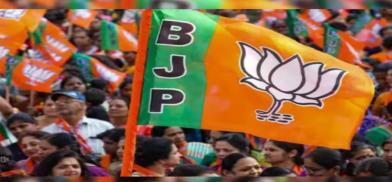Rumblings in the BJP point to a more fundamental problem
The reality is that communal politics of the kind played by the BJP, led by Prime Minister Modi, has stopped paying dividends of the kind that it once did.

Some indications of a BJP unravelling are coming in at least from two key states, Uttar Pradesh and Maharashtra, both where India’s ruling party took heavy losses in the Lok Sabha elections that brought Narendra Modi in his third term as Prime Minister heading a minority government, cut to size from the char sau par (over 400 seats) campaign that the party ran.
In Uttar Pradesh, Deputy Chief Minister Keshav Prasad Maurya has come out with what is being seen as at least a move if not a revolt against Chief Minister Yogi Adityanath. In a social media post that is now being widely quoted, Maurya noted that the organisation is bigger than the government, that the party workers are the pride of the BJP. In doing so, it is said, he has taken aim at the working style of Yogi Adityanath and the Chief Minister’s focus on running the administration with an overdependence on bureaucrats. As a result, the argument goes, party workers appear to have been left with the feeling that they are not heard, or that their work is not being done and that officialdom rules – a style that is being attributed directly to the way the Chief Minister works and controls the politically-sensitive state. In a video clip shared on the platform ‘X’, Maurya said at a public meeting, to rounds of hearty applause: The organisation was, is and will remain bigger than the government. I consider myself first a worker of the BJP and only next the Deputy Chief Minister.”
Maurya met state BJP chief Bhupendra Singh Chaudhary, and the two together then met the BJP national president J P Nadda, followed by a meeting between Chaudhary and the Prime Minister, all in quick succession. The statements and meetings indicate at one level serious dissatisfaction with the way Yogi Adityanath is running the government, and on the other hand are a result of concerns that election reverses are not a one-off but indicative of a deeper decline in the way the party is now being perceived. Yet, it will not be easy to unseat Adityanath, who is also popular at least among some sections, a counter to which is the simple question that comes up now: Is this popularity only on paper, or whipped up over the years to project the Chief Minister as bigger than he actually is? The Lok Sabha elections seem to indicate so: The BJP won 33 seats, down from 62 in the 2019 elections. The upcoming by-polls to 10 Assembly seats in UP will therefore be a tough fight and may well determine much in UP and its fallout across the nation. Key seats here include Akhilesh Yadav’s Karhal constituency and Milkipur (in Ayodhya), whose SP legislator Awadesh Prasad stumped the BJP with an astounding victory from Faizabad, the constituency that covers the city of Ayodhya.
In Maharashtra, the forced split of the Uddhav Thackeray-led Shiv Sena and Sharad Pawar’s Nationalist Congress Party (NCP) has brought bitter dividends in the polls. Unlike in UP, where poll forecasters were happily presenting a BJP sweep, in Maharashtra it was very clear to observers even before the elections that the BJP would take a big hit. This is indeed what happened. The alliance of the BJP-Shiv Sena (Shinde faction)-NCP (Ajit Pawar faction) together won a total of 17 seats, down from 41 out of 48 in the 2019 elections. The BJP itself won only nine of the 28 seats it contested this time; the Congress won 13 of the 17 seats it contested.
The RSS-linked magazine Vivek has now offered an analysis that says Eknath Shinde, who broke away from the main Shiv Sena party but was declared to be the “real” Shiv Sena, was acceptable to the people. The problem, it said, stemmed from the unacceptability of Ajit Pawar, the nephew of Sharad Pawar, who was first attacked by the BJP on charges of corruption and then taken into the BJP fold as a key ally. The Ajit Pawar faction of the NCP now has its own doubts about the wisdom of joining the BJP ranks. Maharashtra is rife with speculation on the Ajit Pawar group of MLAs coming back to Sharad Pawar. Amidst this meltdown, how good is the analysis that it was Ajit Pawar and not the entire, well-coordinated operation that toppled the duly elected government of Uddhav Thackeray (who was in power with the support of the Congress and the NCP) that is seen by the people as unacceptable?
In many ways, these are some attempts to raise questions that do not get to the root of the problem, which is the moral bankruptcy. What has become clear is the perception of the BJP as a party in a race to win at any cost, be it with money power, Hindutva politics or the investigative agencies it uses to bulldoze opposition leaders into submission. This is in plain sight of the ordinary citizen, and for the BJP to believe that it can fix the narrative, grab a headline or turn the story into something in its favour, it seems, stems from the belief and presumption that it can fool all the people all the time. The 2024 election results told the party that it cannot get away. Yet, the BJP refuses to listen even today; its clever arguments and questionable tactics continue.
The reality is that communal politics of the kind played by the BJP, led by Prime Minister Modi, has stopped paying dividends of the kind that it once did. The loss of the Faizabad seat where the Ram temple was hastily inaugurated is not just a metaphor of the bigger losses for the BJP; it is a slap in the face of everything the BJP has stood for and pushed during its tenure – from its ideas of mixing religion and politics to its idea of development that pushed out the poor to make away for a new-found sleekness and a would-be greatness that it thought would descend on Ayodhya with outsiders, and the moneyed class moving in. This decidedly anti-poor approach has become pervasive and is seen as such by everyone but the BJP itself.
The party has sought to redeem this slant with free food grain distribution to 60% of India – doles that highlight a top-down growth model it is accused of promoting and one that cannot make a sustainable growth story for India.
(The writer is the Managing Editor of The Billion Press. Views are personal. By special arrangement with The Billion Press)










Post a Comment